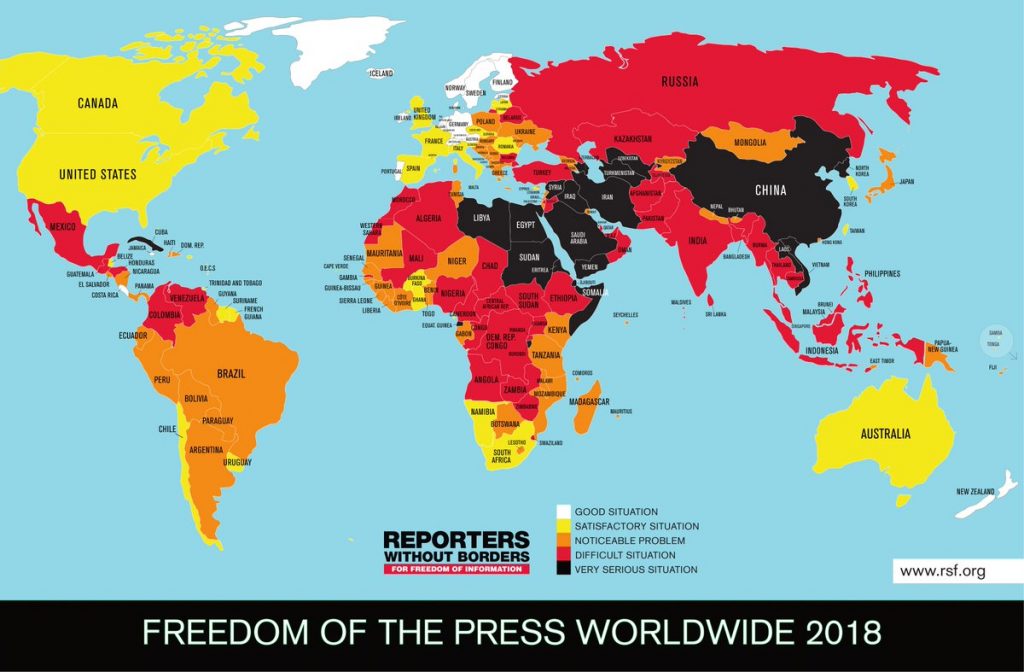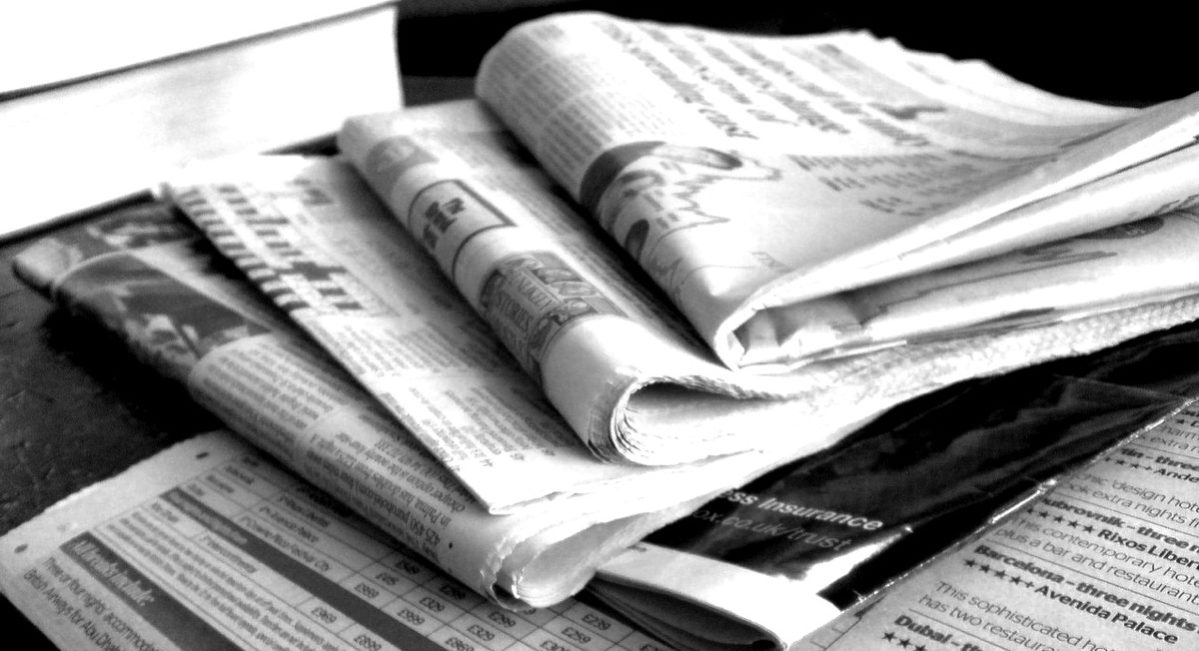The 2018 World Press Freedom Index, compiled by Reporters Without Borders (RSF), reflects growing animosity towards journalists, says RSF.
For the second successive year, Australia has ranked at #19 on the Index.
RSF reported that media freedom thrives in New Zealand, with the country jumping five places on the Index from #13 in 2017 to #8 this year.

In releasing details of its annual report, RSF said:
Hostility towards the media, openly encouraged by political leaders, and the efforts of authoritarian regimes to export their vision of journalism pose a threat to democracies.
The climate of hatred is steadily more visible in the Index, which evaluates the level of press freedom in 180 countries each year. Hostility towards the media from political leaders is no longer limited to authoritarian countries such as Turkey (down two at 157th) and Egypt (161st), where “media-phobia” is now so pronounced that journalists are routinely accused of terrorism and all those who don’t offer loyalty are arbitrarily imprisoned.
More and more democratically elected leaders no longer see the media as part of democracy’s essential underpinning, but as an adversary to which they openly display their aversion. The United States, the country of the First Amendment, has fallen again in the Index under Donald Trump, this time two places to 45th.
The line separating verbal violence from physical violence is dissolving. In the Philippines (down six at 133rd), President Rodrigo Duterte not only constantly insults reporters but has also warned them that they “are not exempted from assassination”. In India (down two at 138th), hate speech targeting journalists is shared and amplified on social networks, often by troll armies in Prime Minister Narendra Modi’s pay. In each of these countries, at least four journalists were gunned down in cold blood in the space of a year.
Verbal violence from politicians against the media is also on the rise in Europe, although it is the region that respects press freedom most. In the Czech Republic (down 11 at 34th), President Milos Zeman turned up at a press conference with a fake Kalashnikov inscribed with the words “for journalists”. In Slovakia, (down 10 at 27th), then-Prime Minister Robert Fico called journalists “filthy anti-Slovak prostitutes” and “idiotic hyenas”. A Slovak reporter, Ján Kuciak, was shot dead in his home in February 2018, just four months after another European journalist, Daphne Caruana Galizia, was killed by a targeted car-bombing in Malta (down 18 at 65th).
In this year’s Index, Norway is first for the second year running, followed – as it was last year – by Sweden (2nd). Although traditionally respectful of press freedom, the Nordic countries have also been affected by the overall decline. Undermined by a case threatening the confidentiality of a journalist’s sources, Finland (down one at 4th) has fallen for the second year running, surrendering its third place to the Netherlands. At the other end of the Index, North Korea (180th) is still last.
The Index also reflects the growing influence of “strongmen” and rival models. After stifling independent voices at home, Vladimir Putin’s Russia (148th) is extending its propaganda network by means of media outlets such as RT and Sputnik, while Xi Jinping’s China (176th) is exporting its tightly controlled news and information model in Asia. Their relentless suppression of criticism and dissent provides support to other countries near the bottom of the Index such as Vietnam (175th), Turkmenistan (178th) and Azerbaijan (163rd).
The Asia-Pacific region still has the world’s worst violator of the freedom to inform: North Korea (180th). The recent widespread adoption of smartphones in North Korea has unfortunately been accompanied by draconian control of communications and the national intranet. The state news agency KCNA is the only authorised source of news for all of the country’s media. Just reading, viewing, or listening to a foreign media outlet can lead to a spell in a concentration camp.
